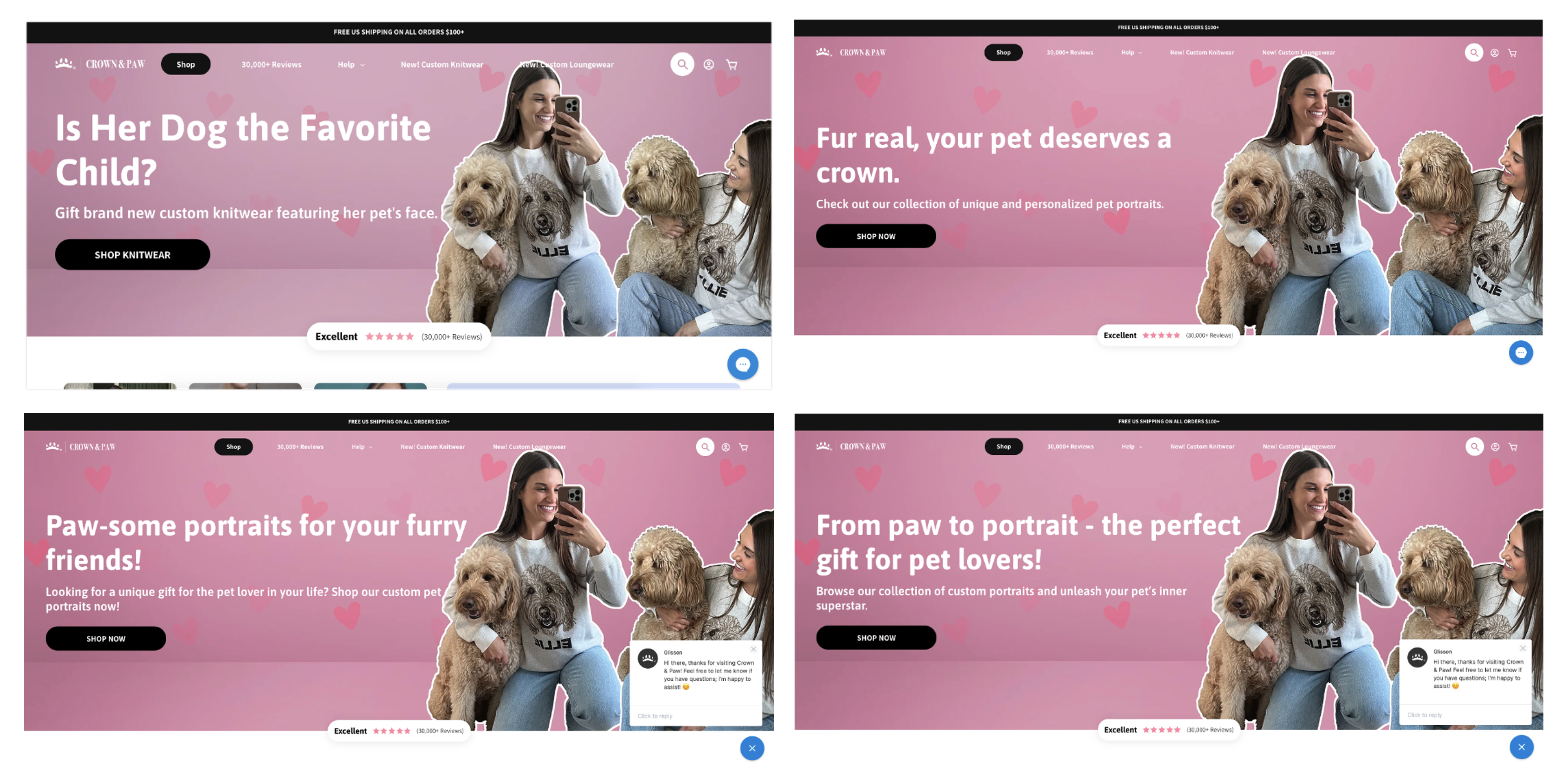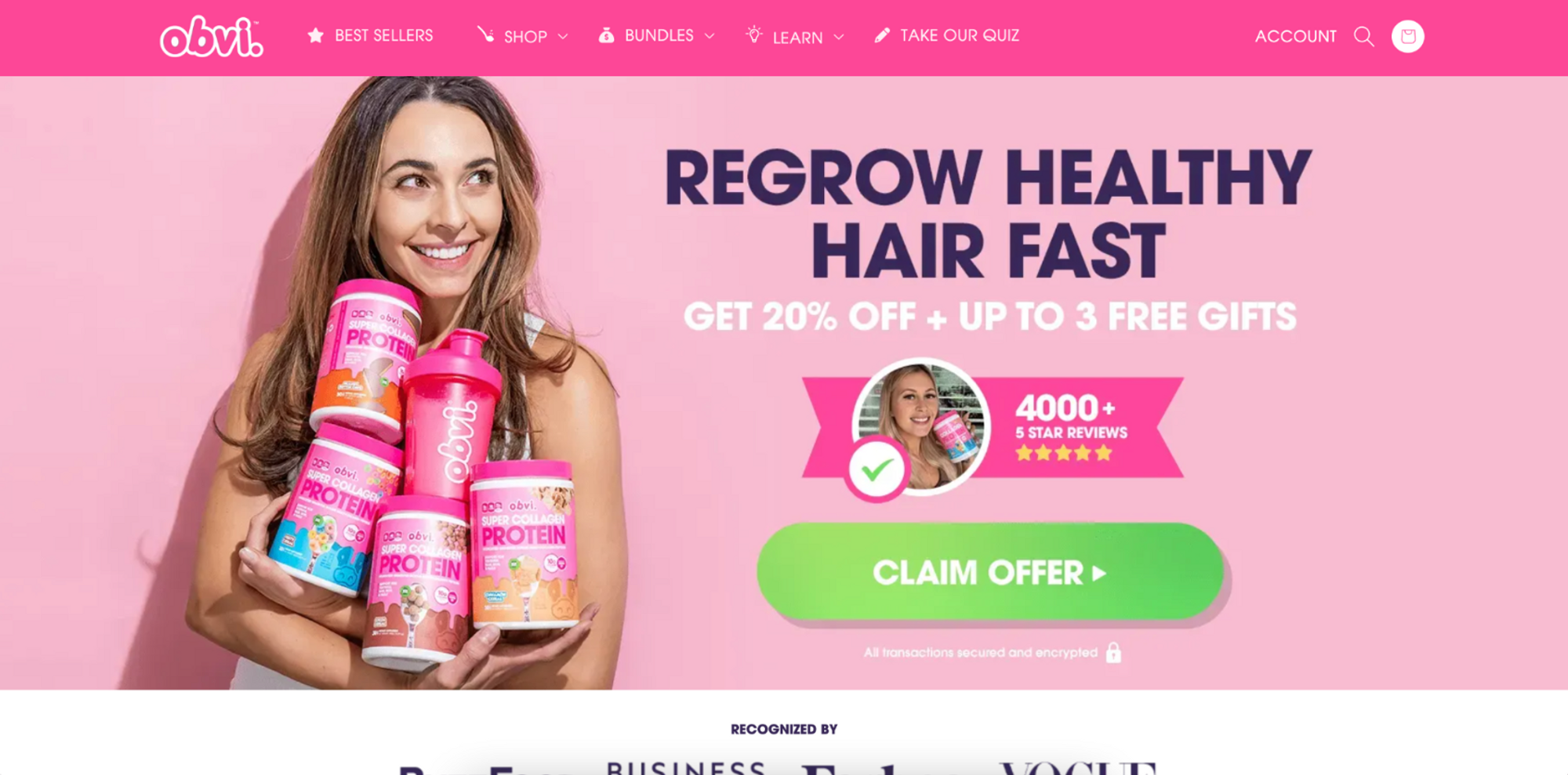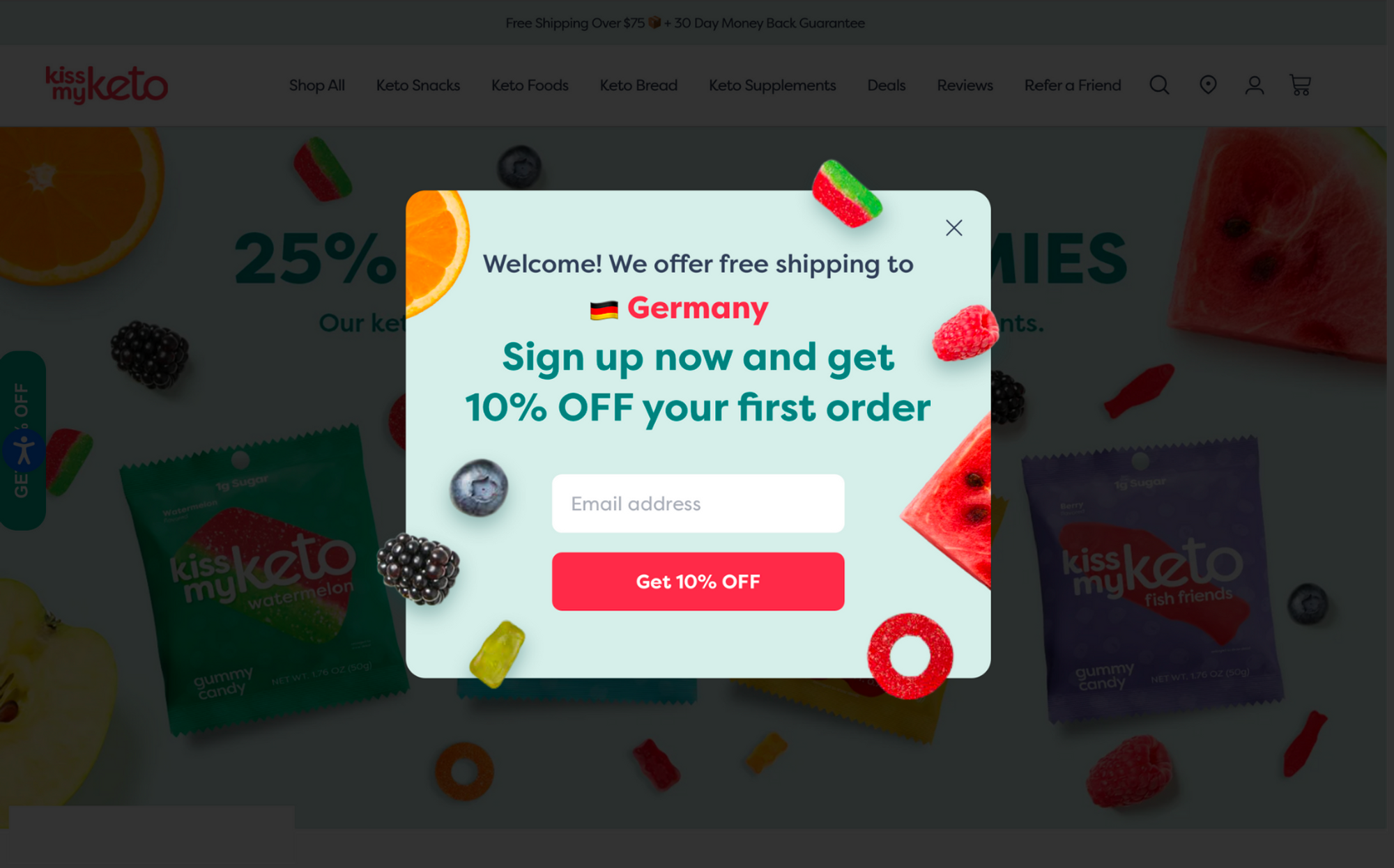Wondering how to get people to buy your product? Are you looking for proven strategies that’ll captivate customers and skyrocket your sales? Look no further!
In this article, we unveil the ultimate guide to unlocking the secrets of successful product sales. From understanding your audience to leveraging the power of social proof, personalization, and continuous improvement, we’ve got you covered!
So buckle up and prepare to dive into ten powerful strategies. It’s time to transform your business and watch your sales soar!
Shortcuts ✂️
- Understand your target audience
- Find the right value proposition and communicate it on your website
- Leverage social proof
- Use demand-generation strategies to attract customers
- Use effective discount strategies
- Personalize the website experience
- Encourage customers to buy from you again
- Keep existing customers engaged with email marketing
- Optimize product pages
- Continuously improve your website
1. Understand your target audience
If you’re wondering how to get people to buy your product, first, it’s essential to understand your target audience.
You need to know:
- who they are,
- what they want,
- and how to reach them effectively.
Learning about your audience can help you tailor your marketing efforts to meet their needs and preferences.
To start understanding your target market, you’ll need to conduct thorough audience research. There are several ways to go about this.
First, analyze your existing customer base. Look for patterns and common characteristics among your most loyal customers. This will give you valuable insights into who your target audience is and what they value.
Additionally, take advantage of online tools and platforms that provide audience analytics. Social media platforms, for example, offer detailed demographic and interest-based data about your followers. This information can help you identify key segments within your audience and develop targeted marketing strategies.
Once you’ve gathered audience insights, it’s time to put them to use to boost sales.
2. Find the right value proposition and communicate it on your website
To get people to buy your product, you need to effectively communicate its value to potential customers. Your value proposition sets your product apart from the competition and convinces new customers that it’s worth buying. It answers the question, “Why should I choose your product?”
To find the right value proposition for your product, you need to understand the needs and desires of your target market.
Put yourself in their shoes and ask yourself what problem your product solves or what benefit it provides.
Once you have a clear understanding of your unique value proposition, it’s time to communicate it on your website. Start by incorporating your value proposition into your headline or tagline. This is the first thing visitors see when they land on your site, so it needs to be compelling.
You might think of more value proposition ideas. The best move here? A/B test them.
An online business, Crown & Paw did just that. They tried out four different headlines aimed right at their audience’s hearts:
- Original: Is Her Dog the Favorite Child?
- Variant A: Fur real, your pet deserves a crown.
- Variant B: Paw-some portraits for your furry friends!
- Variant C: From paw to portrait – the perfect gift for pet lovers!

This experiment helped to convince more customers to buy. In fact, they achieved a 16% increase in orders.
3. Leverage social proof
What’s the first thing you do when you’re on the hunt for a new product?
Chances are, you look for reviews and testimonials from other customers. You want to know if the product is worth your hard-earned money. You want to know if it lives up to its promises.
This is where social proof comes into play.
People are more likely to follow the actions and choices of others. When we see that others have had a positive experience with a product, it builds trust and helps us feel more confident purchasing.
Research shows that 75% of consumers actively seek out reviews and testimonials before making a purchase. As an ecommerce website owner, leveraging social proof can significantly impact your product sales.
Let’s take the example of Vegetology, a company that sells plant-based supplements. They had plenty of amazing reviews from satisfied customers, but there was a problem.
These reviews were buried at the bottom of the product page where hardly anyone saw them. They were hidden from the consistent traffic hitting these pages. To address this issue, they decided to make a strategic change.
Vegetology added a testimonial section to the above-the-fold area of their product page. This section prominently displayed a positive customer review, right where visitors could see it without scrolling.
The addition of the testimonial section led to a 6% increase in the conversion rate and a 10.3% increase in unique purchases.

So, how can you effectively leverage social proof on your own ecommerce website?
- Start by collecting and showcasing customer reviews and testimonials. Reach out to your satisfied customers and ask for feedback. Encourage them to share their positive experiences and highlight the benefits they received from your product.
- Once you’ve gathered reviews and testimonials, strategically place them on your product pages. Consider incorporating them in the above-the-fold section, where they’ll be highly visible.
- You can also create a dedicated section for customer reviews or feature them in a rotating testimonial carousel.
4. Use demand-generation strategies to attract customers
You could have the best product on earth that solves a real problem and offers incredible value, but you won’t increase sales if nobody knows about it!
This is where demand-generation strategies come into play.
In simple terms, demand generation is all about creating awareness and generating interest in your product to attract potential customers.
Demand generation is essential because it helps you reach a wider audience and create buzz around your product. It lays the foundation to attract customers, nurture them, and ultimately drive them to make a purchase.
Using demand-generation strategies effectively can increase your chances of getting people to buy your product.
Here are some examples of effective demand-generation strategies:
- Content marketing: Create valuable, informative content to address your audience’s pain points and position your brand as an industry authority.
- Social media marketing: Utilize social media marketing to engage with your target audience, running targeted ads and creating compelling posts to generate interest in your product.
- Influencer marketing: Use influencer marketing platforms to find influencers or industry experts to leverage their following and build trust through content creation, reviews, and endorsements.
- Email marketing: Nurture prospects with targeted email campaigns, using the best email analytics tools to track performance and gain valuable insights. Provide valuable content, exclusive offers, and personalized recommendations to keep them engaged.
- Search engine optimization: Optimize your website, blog posts, and product pages to rank higher in search engine results, targeting relevant keywords and building quality backlinks. This is one of the best ways to generate organic traffic and foster business growth.
5. Use effective discount strategies
Offering discounts is a popular pricing strategy employed by 99% of retailers and small businesses, and it can be a powerful tool to entice customers to buy your product.
Personalized discounts can have a significant impact on consumers’ purchasing decisions. Tailoring discounts to individual customers based on their preferences and purchase history can create a sense of exclusivity and make them feel valued.
There are various types of discounts you can consider implementing on your ecommerce website.
First-time customer discounts like the one below are a great way to attract new customers and encourage them to make their first purchase.

Seasonal discounts are another popular strategy that can create a sense of urgency and drive sales.
Whether it’s a holiday sale, a summer promotion, or a back-to-school offer, aligning your discounts with seasonal events can grab customers’ attention and motivate them to take action.

Follow these tips if you’d like to create an effective discount strategy:
- Add a deadline to your discount to make it even more persuasive by increasing the urgency.
- Countdown timers can also motivate shoppers to make a decision sooner (even immediately).
- Buyers respond better to percentage discounts (e.g. “20% off”) for items under $100, and they prefer seeing absolute values (e.g. “Save $20”) when items are over $100.
- Using randomized coupon codes (like AXZ20H3) instead of fixed codes (like 10OFF) can increase the coupon redemption rate.
- Use a follow-up sticky bar (like the one below) to remind your potential customers that there’s a discount waiting for them at checkout.

Looking to push discounts on your online shop to convince customers to buy? Try these popup templates:
6. Personalize the website experience
In today’s digital age, customers are bombarded with countless options and distractions. If your website doesn’t stand out and cater to their individual needs, they will likely move on to a competitor.
Personalization helps you cut through the noise and create a meaningful connection with your audience.
Here are some tips for personalizing the website experience:
6.1. Personalize landing page headlines based on ad copy
When visitors click on your ads, they have certain expectations based on the messaging they’ve seen. Aligning your landing page headlines with your ad copy creates a seamless experience that reinforces their interest and increases the likelihood of conversion.

6.2. Personalize your homepage messaging for returning customers
Returning customers are valuable assets, and you want to make them feel recognized and appreciated. Consider displaying personalized recommendations based on their purchase history or offering exclusive discounts to reward their loyalty.

6.3. Display personalized offers based on traffic source
Different traffic sources bring visitors with different needs and interests. Tailoring your offers based on the traffic source can help you capture their attention and provide a more relevant experience.

6.4. Personalize your welcome popups with country
When visitors from different countries arrive on your website, acknowledging their location can create a sense of familiarity and trust.

7. Encourage customers to buy from you again
Rather than solely focusing on making sales, shift your mindset towards building lasting customer relationships. Investing in the relationship-building process can create a loyal customer base that will choose your brand over competitors time and time again.
Remember, a happy and satisfied customer is more likely to become a repeat customer.
One crucial step in encouraging customers to buy from you again is to follow up after their initial purchase. Reach out to them and inquire about their experience with your product or service.
Show genuine interest in their satisfaction and address any concerns they may have. This not only demonstrates excellent customer service but also helps you gather valuable feedback to improve your offerings.
Moreover, expressing gratitude for their business goes a long way in nurturing customer loyalty. You can do this by sending personalized thank-you emails or including handwritten notes with their orders.
Showing appreciation makes customers feel valued and appreciated, reinforcing their decision to choose your brand. This small gesture can have a significant impact on their likelihood of becoming repeat buyers.
Implementing a loyalty program or rewards system is another effective strategy to encourage repeat purchases. Offer incentives to customers who choose to shop with you again. This could include exclusive discounts, free products, or early access to new releases.
Think of your relationship with customers as a journey. You want to guide them through a positive experience from the first purchase and beyond.
8. Keep existing customers engaged with email marketing
When maximizing your sales potential, one of the most effective strategies is to keep your existing customers engaged through email marketing.
Email marketing allows you to establish a direct line of communication with your customers, enabling you to nurture the relationship, build customer loyalty, provide valuable information, and ultimately generate more sales.
Gone are the days of generic mass emails. People are more likely to respond positively to personalized messages that speak directly to their needs and preferences.
Take the time to gather data about your customers, like demographic information, their purchase history, and their interests. Use this information to make your email content, subject lines, and offers specific to each audience segment.
This way, you’ll create a sense of individual attention and relevance, making your customers more inclined to open and read your emails—and to take action.
Segmenting your email list is another crucial aspect of effective email marketing. Not all customers are the same, so why treat them as if they were?
Dividing your email list into different segments based on criteria such as purchase behavior, demographics, or engagement level can help you deliver more targeted, personalized content.
Beyond personalization and segmentation, providing value should be at the core of your email marketing strategy. People are inundated with promotional emails daily, so it’s crucial to offer something that’s actually worth their time.
This value can come in various forms, such as informative content, helpful tips and tricks, exclusive discounts, or early access to new products. The key is to consistently provide content that your customers find useful, interesting, or entertaining.
9. Optimize product pages
Getting traffic to your product pages is only half the battle. You need to convince customers to buy from you and making your product pages shine is key to achieving this.
It’s all about giving visitors the goods they need to hit that “buy” button – killer images, detailed descriptions, and glowing reviews.
Here’s how to boost your product pages:
- Headline hook: Reel them in with catchy headlines that scream benefits.
- Nail the descriptions: Make them pop with key features and perks.
- Bullet points rule: Keep it snappy with easy-to-digest bullet points.
Mounteen used these exact tips to improve the ROI of its marketing efforts and achieve an 18% revenue boost. And they did this automatically for all product pages with the help of OptiMonk AI.

10. Continuously improve your website
Your website serves as the virtual storefront for your business, and making sure it’s optimized for conversions is key to attracting and retaining customers.
Continuous improvement is important because the digital landscape is constantly evolving. What worked yesterday may not work today, and what works today may not work tomorrow.
When you continuously evaluate and refine your website, you stay ahead of the curve and adapt to changing consumer preferences and behaviors.
One of the most effective ways to continuously improve your website is through CRO. This could involve optimizing your landing pages, streamlining the checkout process, or improving the clarity and visibility of your calls-to-action.
A/B testing is another powerful technique to enhance your website’s performance. It involves creating two or more versions of a web page and testing them against each other to determine which one yields better results.
Testing different elements such as headlines, images, colors, layouts, or even button text helps you gather data on what resonates best with your audience.
FAQ
How long does it take to see results from these strategies?
It varies depending on your online store and the specific strategy you’re implementing. Some tactics may yield immediate results, while others might take longer to show significant impact. Be patient and monitor your progress regularly.
Are these strategies only for ecommerce businesses?
While most of these strategies are tailored for online businesses, several can be adapted for brick-and-mortar stores as well. For instance, offering discounts and leveraging social proof can benefit both online and offline businesses.
How can I measure the effectiveness of these strategies?
Tracking key performance indicators (KPIs) such as conversion rates, sales revenue, website traffic, and customer feedback can help you gauge the effectiveness of these strategies. Use analytics tools and customer surveys to gather data and evaluate your progress.
What if I don’t have a large marketing budget?
Many of these strategies can be implemented with minimal or no cost, making them accessible to businesses with limited marketing budgets.
Wrapping up
Getting people to buy your product requires a thoughtful, strategic approach, especially for small businesses.
But with the ten proven strategies discussed in this article, you can up your game big time. These strategies will help you drive more traffic, build trust, increase sales, and get repeat customers.
From using a strong value proposition to leveraging social proof, optimizing product pages, and utilizing demand-generation and discount strategies, each tactic can help you influence consumer behavior and guide them toward a purchase decision.
Keep in mind, what works for one might flop for another. So be sure to experiment, monitor results, and adapt your approach based on your target audience’s unique needs and preferences.












